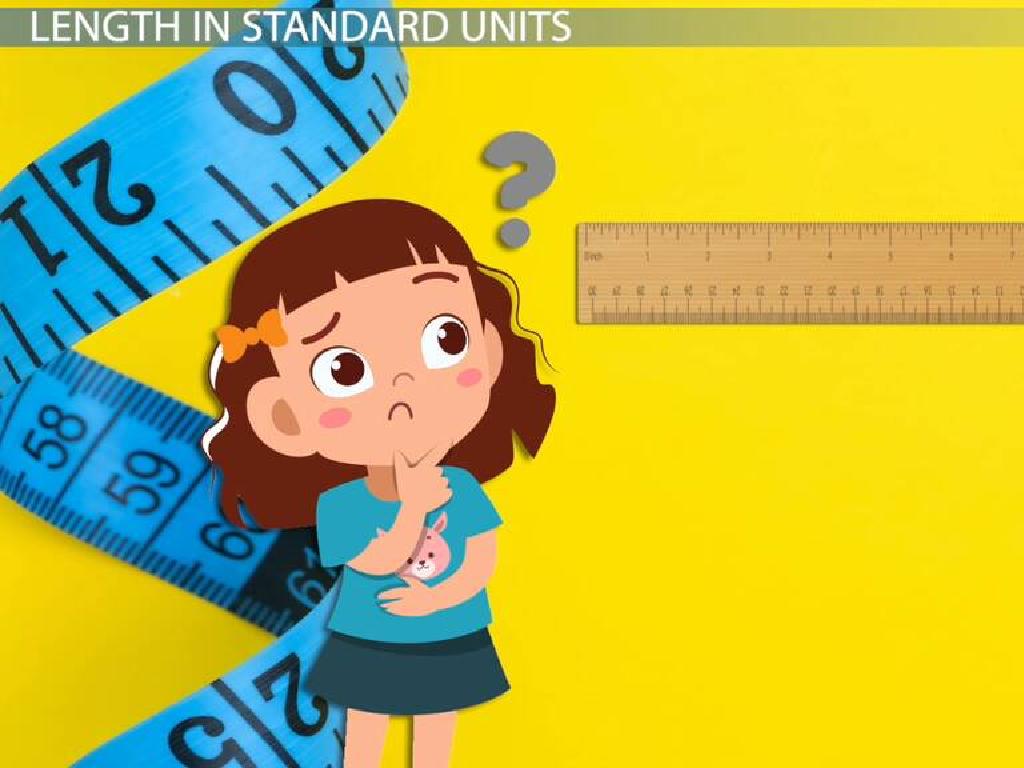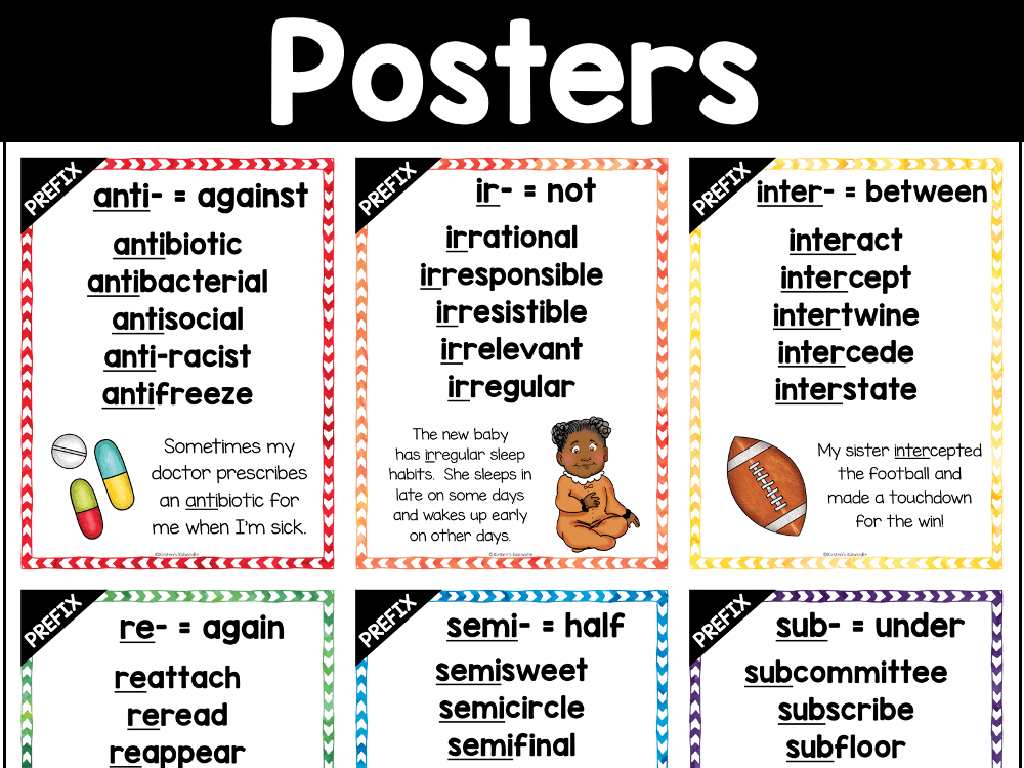Rate Of Change Of A Linear Function: Graphs
Subject: Math
Grade: Eighth grade
Topic: Linear Functions
Please LOG IN to download the presentation. Access is available to registered users only.
View More Content
Understanding Rate of Change in Linear Functions
– What are Linear Functions?
– A linear function creates a straight line graph.
– Exploring Rate of Change
– Rate of change is the slope, showing how one variable changes in relation to another.
– Real-world Rate of Change
– Examples: speed of a car, cost of goods over time.
– Graphing Rate of Change
– Use a graph to visualize how the function changes.
|
This slide introduces the concept of linear functions and their rate of change, which is a fundamental aspect of algebra. Begin by defining linear functions as functions that graph to a straight line and have a constant rate of change, also known as the slope. Emphasize that the rate of change is a measure of how one variable changes in relation to another, which is crucial for understanding relationships between variables in real life, such as the speed of a car or the cost of goods over time. Encourage students to think of other examples where rate of change is evident in their daily lives. Conclude by explaining how graphing these functions can help visualize and better understand the concept of rate of change. Provide practice problems where students can calculate and graph the rate of change from given data.
Understanding Linear Functions
– Define a Linear Function
– A function with a constant rate of change, graph is a straight line
– Equation of a line: y = mx + b
– ‘m’ represents slope, ‘b’ is y-intercept
– Characteristics of Linear Graphs
– Straight lines with uniform gradient
– Graphing Linear Functions
– Plot points and observe the rate of change
|
This slide introduces the concept of linear functions, which are fundamental in algebra. A linear function is defined by its constant rate of change, which is visually represented by a straight line on a graph. The equation y = mx + b is the standard form, where ‘m’ stands for the slope, indicating the steepness of the line, and ‘b’ represents the y-intercept, the point where the line crosses the y-axis. Characteristics of linear graphs include their straightness and uniform gradient. When graphing linear functions, students should practice plotting points using different values of ‘x’ and calculating the corresponding ‘y’ values to see the linear relationship and understand the concept of the rate of change. Encourage students to try plotting graphs with different slopes and y-intercepts to see how these values affect the position and angle of the line on the graph.
Exploring Rate of Change in Linear Functions
– Rate of Change equals Slope
– Slope measures steepness of a line: rise over run
– Positive vs. Negative Slope
– Positive slope goes up, negative slope goes down
– Zero Rate of Change
– Zero slope means the line is horizontal
– Graphical Interpretation
|
This slide introduces the concept of rate of change in linear functions, which is synonymous with the slope of a line. The slope is the ratio of the vertical change (rise) to the horizontal change (run) between two points on a line. A positive slope indicates an increasing function, while a negative slope indicates a decreasing function. A zero rate of change means the function has a constant value, represented graphically by a horizontal line. Encourage students to visualize these concepts by drawing graphs and identifying the slope. Use real-life examples, such as the incline of a hill, to illustrate positive and negative slopes. For zero rate of change, discuss scenarios like a car moving at a constant speed. This foundational understanding will be crucial for interpreting and graphing linear functions.
Calculating Rate of Change
– Understand Rate of Change formula
– Rate of Change = (Change in Y) / (Change in X)
– Use two points to find rate
– Pick any two points (x1, y1) and (x2, y2)
– Graphical example calculation
– Calculate using points (2,3) & (4,7) on a graph
– Interpret the graph’s slope
|
This slide introduces the concept of Rate of Change in the context of linear functions, which is a crucial concept in understanding how graphs represent real-world situations. The formula for Rate of Change is explained as the ratio of the vertical change to the horizontal change between two points on a line. Students will learn how to select two points on a linear graph and use their coordinates to calculate the rate of change, which is also the slope of the line. An example calculation is provided to illustrate the concept. Emphasize that the slope of the line on a graph represents the rate at which Y changes with respect to X. Encourage students to practice with different pairs of points to see how the rate remains constant for linear functions.
Graphs and Rate of Change
– Identify rate of change on graphs
– Rate of change equals slope, shown as rise over run
– Compare linear function graphs
– Look at two graphs and note differences in their slopes
– Relate rate of change to steepness
– Steeper slope means greater rate of change
– Graph interpretation and analysis
|
This slide aims to help students understand the concept of rate of change in the context of linear functions and their graphical representations. Begin by explaining that the rate of change is another term for the slope of a line, which can be calculated as the ‘rise over run’ between two points on a graph. Encourage students to practice identifying the rate of change by examining various linear graphs. Discuss how comparing different linear functions can reveal differences in their rates of change, and how this affects the steepness of the graph. A steeper graph indicates a larger rate of change. Use examples to illustrate these concepts and provide students with practice problems to reinforce their understanding. During the next class, review these concepts and ensure that students can interpret and analyze graphs in terms of rate of change.
Real-World Linear Functions: Rate of Change
– Car speed as a linear function
– Constant speed translates to a straight line on a graph
– Economic growth over time
– Steady economic growth shows as a rising line
– City population increase
– Population growth can be visualized as an upward slope
– Understanding slopes in real life
|
This slide aims to illustrate the concept of rate of change in linear functions with tangible examples. Students will see how a car moving at a constant speed is represented by a straight line on a graph, indicating a steady rate of change. Similarly, they’ll learn how economists use linear graphs to represent consistent economic growth over time. Additionally, the concept of population increase in a city can be mapped as a linear function, with the slope indicating the rate of growth. Encourage students to think of other examples where the rate of change is constant and can be represented by a linear function. This will help them understand the practical applications of linear functions and their graphs in everyday life.
Class Activity: Graphing Race!
– Form small groups for the challenge
– Graph a linear function provided
– Calculate the function’s rate of change
– Use the formula (change in y) / (change in x)
– Present and discuss your findings
– How does the slope influence the steepness?
|
This interactive class activity is designed to help students understand the concept of the rate of change in linear functions through hands-on practice. Divide the class into small groups and provide each with a different linear function to graph. Students will then calculate the rate of change, or slope, of their function. After graphing, each group will present their graph and findings to the class, discussing how the rate of change affects the steepness of the graph. Encourage students to explore how different slopes (positive, negative, zero, undefined) are represented graphically. Possible activities: 1) Graphing on paper, 2) Using a digital graphing tool, 3) Creating a human graph, 4) Matching graphs to scenarios, 5) Slope calculation contest.
Wrapping Up: Rate of Change
– Recap: Rate of Change importance
Rate of Change shows how one quantity changes in relation to another.
– Homework: Real-world linear function
Find an example like speed (distance over time) and calculate its rate.
– Discover rate of change in life
– Next class: Systems of Equations
We’ll explore how different linear equations interact.
|
As we conclude, remind students that the rate of change is a fundamental concept in understanding how variables interact within a linear function. It’s the slope of the line on a graph, showing the relationship between two quantities. For homework, students should find a real-world example of a linear function, such as the speed of a car or savings over time, and determine its rate of change. This will help them apply mathematical concepts to everyday life. In preparation for the next class, students should start thinking about systems of linear equations, where two or more functions come together. Encourage them to review graphing linear equations and finding points of intersection.






